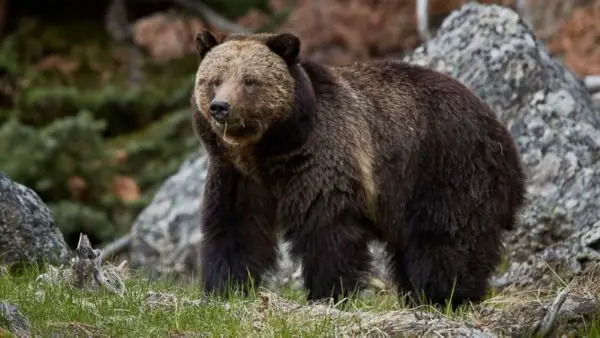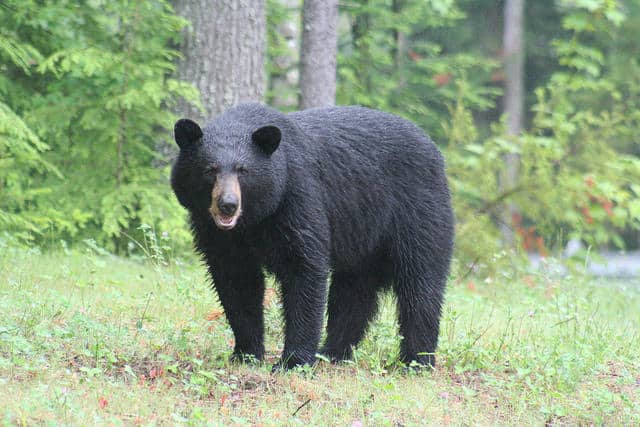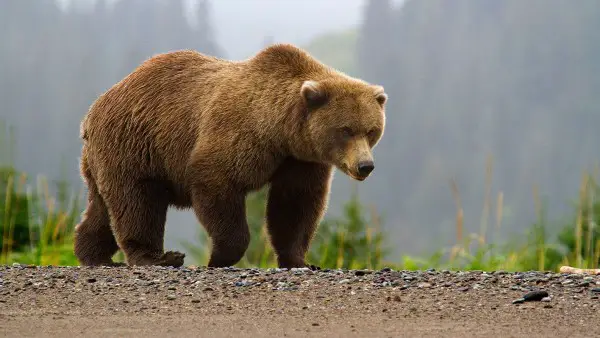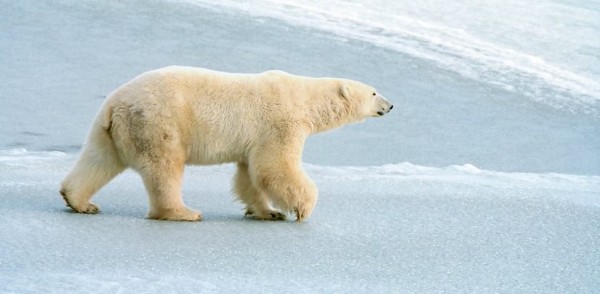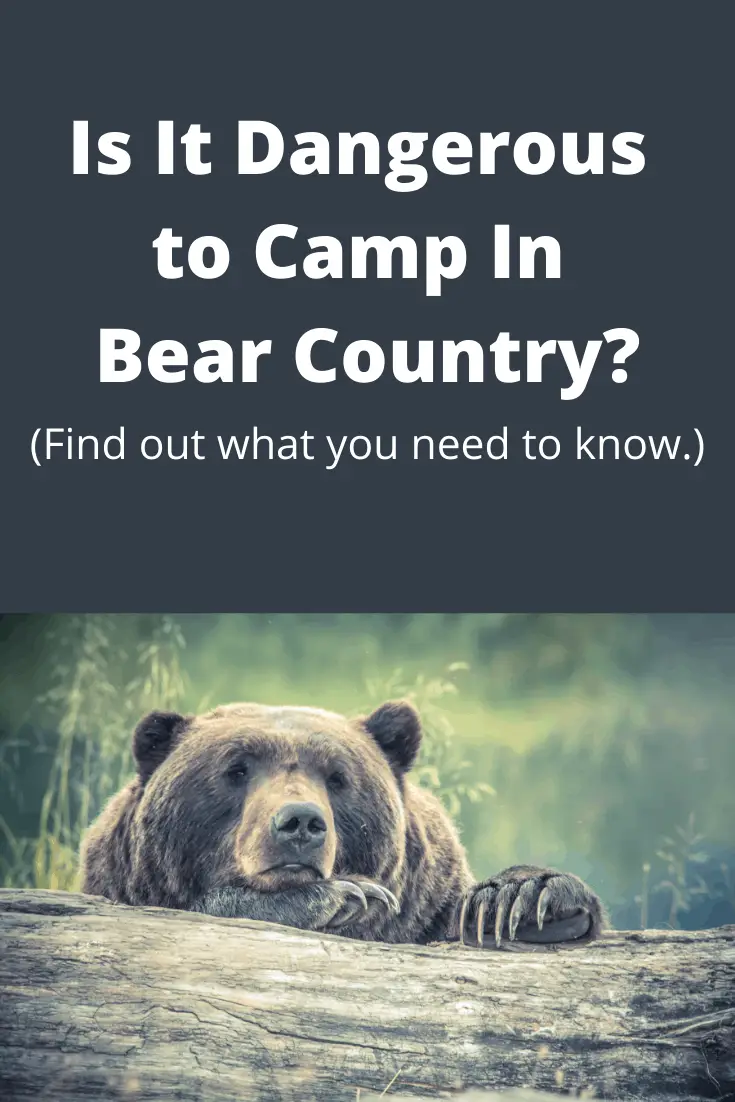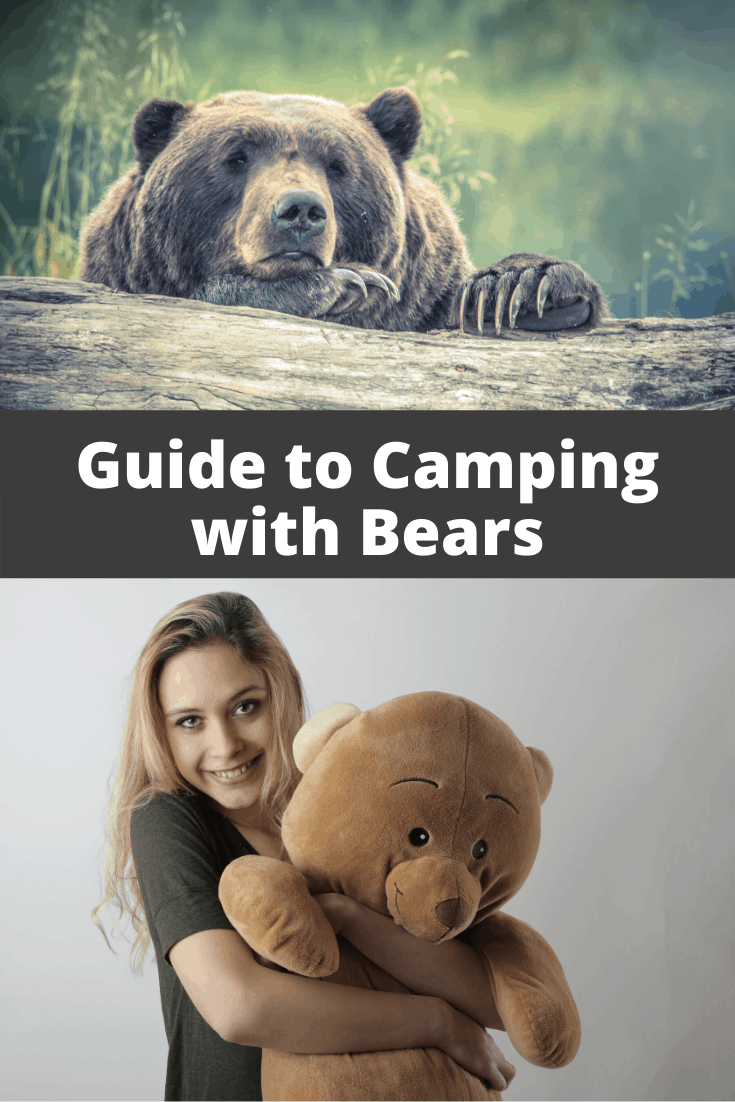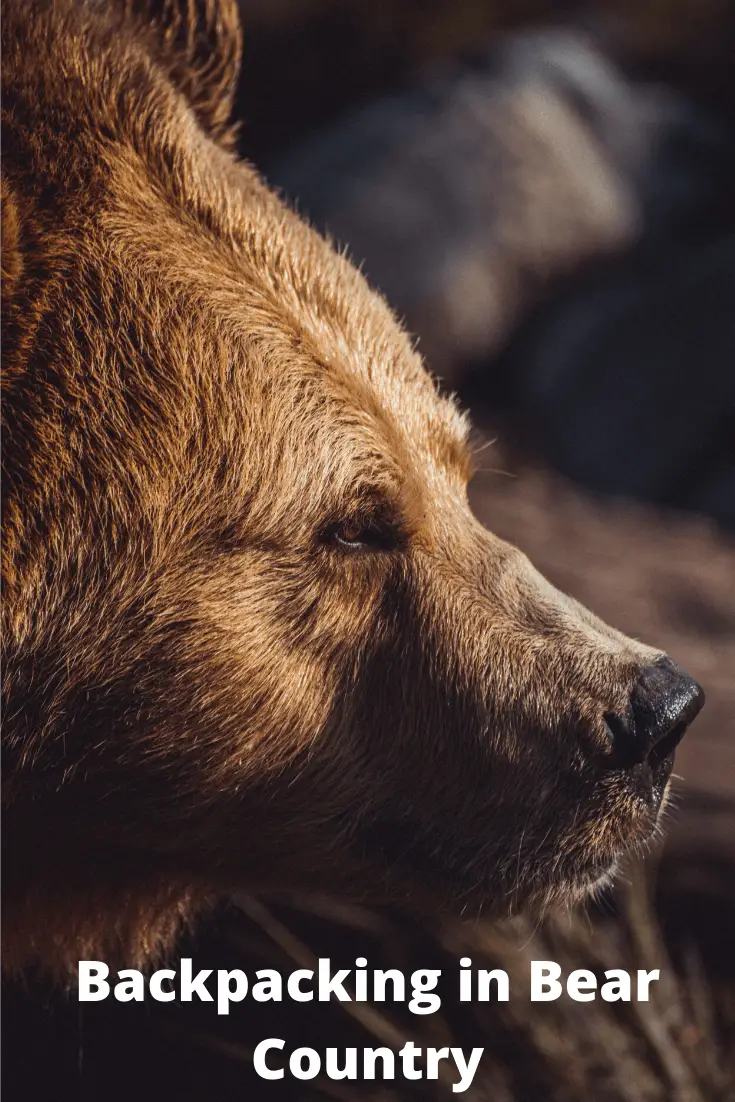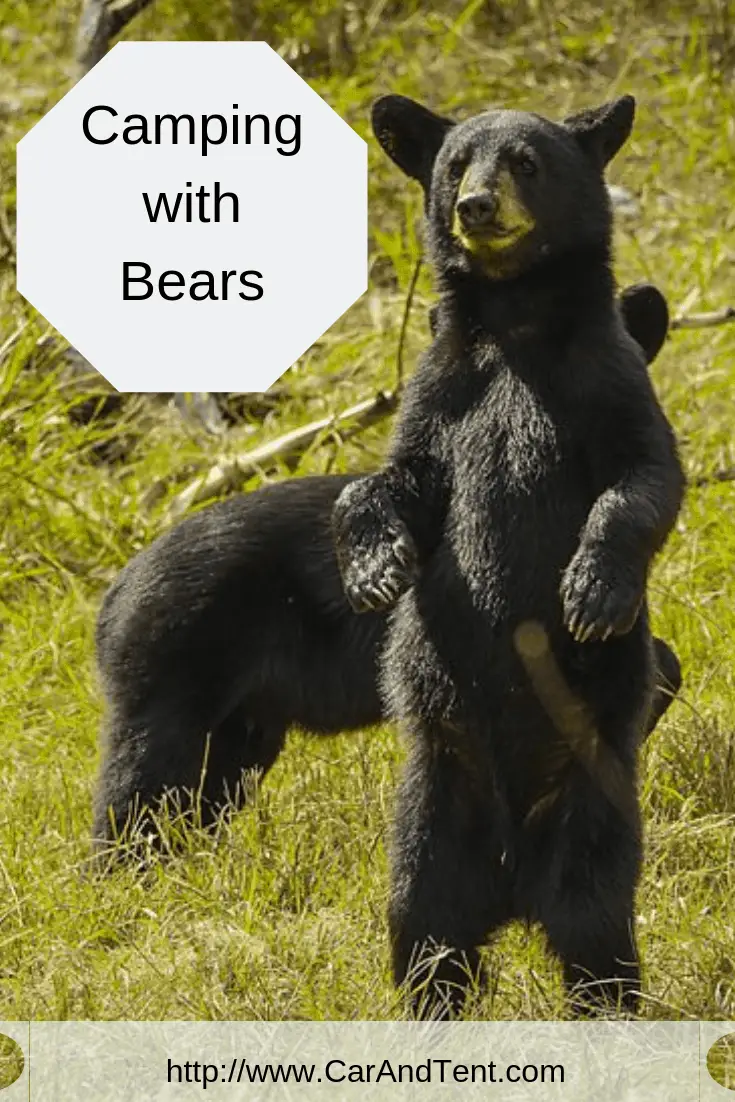You’ve probably already read that bear attacks are extremely rare and that you’re more likely to be attacked by a person than you are by a bear. This doesn’t mean bears aren’t dangerous or that you shouldn’t take precautions against them.
Camping with bears requires you to take a few special precautions and it’s best to know what to do in the unlikely event that you are attacked by a bear. As the old saying goes, “better safe than sorry”.
In this post, I’ll tell you all about camping with bears. I’ll focus more on camping in the United States but if you happen to be camping in a different country with a similar bear population, this post will still be useful for you.
Table of Contents
Bears in the United States
So what types of bears actually live in the U.S.? There are three bear breeds that you might run into while camping in the United States. They are brown bears, black bears, and polar bears. Each breed is unique and some types of bears are much more dangerous than others.
Luckily, the more dangerous the bear, the less likely you are to actually encounter it. In fact, the two most dangerous types of bears in the country are mostly found in Alaska. Stay out of Alaska and your chances of running into an aggressive bear go down dramatically.
The Black Bear
American black bears can be found throughout most of the United States. The exception to this is some of the midwestern states where brown bears have mostly taken over. In fact, when I was living in Philadelphia a black bear was spotted swimming in the Wissahickon River in Fairmount Park.
For this reason, I look at bear maps and take them with a grain of salt as you never see maps that list big cities as places where bears live. Black bears are usually non-confrontational and often live in close proximity to humans without us ever knowing about it. This is probably why the black bear populations are much larger than brown bear populations.
These bears range in weight from 100 to 600 pounds and can stand as tall as 7 feet high when standing on upright. They can live up to 25 years old and according to the National Park Service, they can also come in a few different colors.
A black bear might actually have black, blond, blue, cinnamon, gray, or white fur. However, in most cases, black bears just have black fur.
Where do Black Bears Live
In warmer months black bears don’t really need to live anywhere specifically. In colder weather and in the winter, they may make a den under rock crevices, in small caves, and under logs and fallen trees.
When looking for a wilderness campsite location, stay away from these areas as camping near a bear den dramatically increases the chances that you’ll run into one.
Also, keep in mind that black bears are fantastic climbers. Black bears can easily climb trees and are actually more comfortable in trees than they are on the ground. The reason for this is that their claws have evolved to make scaling trees easy for them.
What do Black Bears Eat
Black bears are omnivores and they’ll eat almost anything. In the wild, they eat mostly nuts and berries with some game animals and even bugs added to their diet as well.
At a campsite, a black bear will eat almost anything you leave out. Even soap that smells like food is fair game so it’s important that you either leave scented items at home or place them in bear canisters.
And don’t think that just because you can’t smell something it means that a bear can’t either. According to SectionHiker.com, a bear’s sense of smell is 2,100 times stronger than a human’s sense of smell.
Threat Level
A black bear is likely to try to steal your food when you’re not around and while you’re sleeping. However, black bears are generally fearful of humans and are much more likely to run away from you than they are to attack. Luckily for us, black bears often forget that they are bears and can easily defeat an unarmed human if they want to.
If these bears do attack you it is usually because you’ve surprised them or they feel that you’re a threat to their cubs. However, even a surprised bear will often run away from a human. My brother almost ran right into one while he was jogging in a wooded area and the bear frantically clamored up a tree.
I’ve also personally come across black bears and they didn’t want to have anything to do with me. They retreated into the woods and were gone in an instant.
The encounter did, however, make me realize just how quietly and quickly these large animals can move. The fact that they usually don’t attack people, even though they easily can, makes me respect them even more.
What to do During a Black Bear Attack
Most experts agree that when a black bear attacks you, it is best to fight back. Ideally, you’ll have bear spray or some other weapon on you but if not, punch and kick as hard and as ferociously as you can. Aim for the bear’s eyes and nose as these are really the only vulnerable parts of a bear when facing an unarmed human.
If you’re lucky, the bear will decide you’re not worth the effort and will stop attacking you. If not, well at least you went down fighting.
Keep in mind that most black bear attacks in the United States have not been fatal. In fact, only 25 fatal black bear attacks have been recorded in all of North America over the last 20 years. Come of these occurred in Canada.
The Brown Bear
Brown bears are often synonymous with the term grizzly bears. These bears also stand at a height of about 7 feet but they can weigh up to 1,000 pounds. Very large brown bears like the ones found on Kodiak Island can stand up to 9 feet tall.
You can find these bears in a few western states as well as Alaska. These bears are not very common outside of Alaska and Wikipedia states that only about 1,500 brown bears can be found in the lower 48.
Alaskan brown bears tend to be larger and more aggressive than brown bears found in other areas of the country. These bears have much harsher climates to contend with and have to eat more than their southern cousins and as a result, are always on the lookout for food.
Where do Brown Bears Live
Brown bears also make use of dens in the winter to hibernate. However, not all brown bears will hibernate and in warmer areas, brown bears might not bother to hibernate at all.
Bears that do hibernate will find dens similar to that of black bears. They’ll use rock formations and trees and will even go underground when it suits them.
Brown bears don’t typically hang out in trees but this doesn’t mean they don’t have the ability to climb them. If you’re climbing a tree to get away from a brown bear, assume that they’ll be climbing up right behind you.
What do Brown Bears Eat
Brown bears will eat animals both large and small. They’re also good at catching fish and foraging for berries, roots, and anything else their stomach can tolerate.
These bears will even eat dead animals they come across so they really aren’t picky.
A brown bear is even stronger than a black bear and has been known to tear a door off of a vehicle just to get to some cherry-flavored Chapstick. This is why food safety is an absolute must in brown bear territory.
Threat Level
Unless you’re camping in Alaska, your chances of running into a brown bear are actually quite low. This is true even in lower 48 states that have brown bears.
However, if you do run into a brown bear, you’ll want to tread cautiously. These bears aren’t nearly as timid as black bears and their claws can do more damage than the claws of black bears.
What to do During a Brown Bear Attack
If you have time, spray them with your bear spray. Hopefully, this will be sufficient enough to deter the bear and you’ll come out of the attack will end before it even starts. If the bear does get a hold of you, experts say not to fight back. The basic premise is that you’ll probably just anger the bear even more and they’ll end up attacking you for an even longer period of time.
The suggestion is that you go to the ground and you cover your vitals as best as you can. This is where it gets tricky though.
Experts also say that if the attack goes on for a prolonged period of time, you should assume that the bear wants to kill and eat you and therefore you might as well fight back. I’ve yet to find any research on just how long is too long and of course, I don’t want to ever be a part of this type of research so unfortunately, your guess is as good as mine.
Also, if a brown bear appears to actively be hunting you, go ahead and fight back as soon as it attacks. Playing dead for an animal that wants to eat you is basically just giving them a free meal.
The Polar Bear
Polar bears stand at about the same height as brown bears and black bears but they can weigh up to 1,200 pounds. These bears are the largest bears living in North America but you’ll only find them in remote areas of Alaska.
You’re unlikely to come across a polar bear while camping. In fact, even if you want to camp with polar bears, you might have a hard time finding a place to do it. If you’re searching for a place to camp with polar bears out in the wild, look into visiting the Bering Land Bridge National Preserve. Otherwise, you might have to look into camping on private land.
Where do Polar Bears Live
Polar bears have the ability to easily withstand cold climates and they can find food all year long. Because of this, the only time a bear will live inside a den is when it is pregnant during the winter.
These dens are often created out at sea on top of the ice. They can also be found further inland in the usual places that bears make dens.
What do Polar Bears Eat
Polar bears have a diet that consists mostly of meat. In the wild, they’ll prey on seals, fish, and even small rodents when necessary.
These bears will also feed on dead animal carcasses. A washed-up whale can often be the site of a polar bear feast. Polar bears can smell an animal carcass from over 20 miles away so if you come across a dead animal in polar bear country, you might want to get away from it as quickly as possible as it could become a magnet for polar bears.
Threat Level
The chances that you’ll ever come across a polar bear while camping is slim to known. However, if you do run into one you better hope that it is not hungry.
Polar bears are the only bears in North America that are known for actively hunting humans as food. Yes, you read that correctly. When a polar bear runs across a human, he views him as food.
What to do During a Polar Bear Attack
From what I’ve read about polar bears, you basically only survive a polar bear attack by spraying the bear with bear spray so that it runs off or by killing the polar bear. If you’re going to fight a polar bear, you’re probably going to need a shotgun and even then you might not survive a polar bear charge.
Just for the record, I do not endorse killing polar bears, or any other animal for that matter unless you’re life is in danger or you are a hunter out looking for a meal.
Even if you’re unarmed against a polar bear, the best thing to do is to fight back. Again, aim for its face and hopefully, you’ll get it in the eye as that will really be the only way to hurt a polar bear.
How to Avoid Bear Attacks Altogether
The best way to survive a bear attack is to not get attacked in the first place. Doing so is actually much easier than you might think.
Here are some steps you can take to avoid bear encounters and bear attacks while camping.
- Go camping with a large group of people.
- Practice proper food safety.
- Stay away from natural food sources.
Safety in Numbers
Even polar bears will think twice before attacking a large group of people. The larger your group, the fewer chances you’ll have of being attacked by a bear.
Also, if you are attacked by a bear, you’ll have more people to help you fight the bear off. One person with a can of bear spray might miss but with ten people spraying the chances of the bear getting sprayed go up dramatically.
Practice Proper Food Safety
When bears ruin campsites it is usually the result of improper food storage. Wilderness camping usually calls for bear-proof food containers and often-times you’ll want to hang these canisters from a tree.
Just remember that bears can climb trees so it is not enough just to toss your canister up into a tree. You’ll want to hang your food container from a smaller tree branch so that the bear will not want to climb out onto it.
Unfortunately, even this precaution may not be enough to keep bears away from your food canister. There have been reports of smart bears simply tearing smaller branches down to knock the canisters loose.
However, if you’ve locked your food safely away in a bear-proof container, you’ll have nothing to worry about. When the bear leaves the area you can go ahead and retrieve your canister and head home.
Stay Away from Natural Food Sources of Bears
Picking natural blueberries and raspberries while out camping and hiking is such a treat. The last time I was hiking in Virginia I came across a bunch of wild blueberry bushes and I chowed down on them.
I felt comfortable doing this because I was in an open area that wasn’t really in the wilderness or in an area known for bears. It was also Virginia so if a bear did happen to come across me it would at least have been a black bear.
Even still, it is a good idea to stay away from areas like this. Bears love picking berries and some raspberry bushes can be so thick that you might not even notice a bear is in them right away.
Surprising a bear while he is eating is one of the fastest ways to get attacked. If you can’t resist snacking on a wild berry patch, approach cautiously and make sure you make a lot of noise. This will give the bear a chance to become aware of you and will reduce the likelihood that you’ll be attacked.
What to do During a Bear Encounter
- Don’t run away.
- Back away slowly.
- Calmly talk to the bear.
- Don’t make eye contact.
- Pick up children and small pets.
Never run away from a bear. This will often cause their instincts to kick in and they’ll end up attacking you just because you ran away. If you need to get away from a bear, slowly back away while keeping your eyes on the bear.
This being said, don’t make direct eye contact with the bear as this could be considered an act of aggression. Bears may go after children and small pets so pick them up and the bear will be less likely to attack them.
Also, calmly talk to the bear. It doesn’t matter what you say, you’re just trying to reinforce the fact that you’re a human since most bears don’t actually prey on humans.
How and Why to Use Bear Spray
We’ve talked a lot about using bear spray but what exactly is bear spray? Bear spray has been around for almost 40 years and it has actually been proven to be more effective at stopping a charging bear than a firearm.
For this reason, even hunters are encouraged to carry bear spray with them while out on a hunt. The active ingredient in bear spray is capsaicin which is basically what you find in chili peppers.
When capsaicinoids come into contact with the bear’s nose, eyes, and mouth, it creates a burning sensation. Remember when we talked about how sensitive a bear’s sense of smell is? Well, luckily for us this is actually bad for them when we’re spraying them with bear spray.
Here are some tips for using bear spray.
- Keep your bear spray readily available.
- Practice pulling your bear spray out of its holster.
- Make sure your spray hasn’t expired.
- Fire from close range and only when you feel you have to.
Keep in mind that this spray isn’t going to be any good to you if it is sitting in your backpack when you’re attacked. Bear spray should be kept in a holster clipped to your belt or your vest so that you can pull it out at a moment’s notice.
You’ll only have a second to react during a bear charge so you might want to actually practice pulling it out of its holster before each camping or hiking trip.
Also, be sure to check the expiration on your bear spray. These can usually expire after a year or two and it is important that you have a fresh and effective can on you when you need it.
A good distance for using bear spray is about 12 feet but if the wind is blowing in your direction you may have to wait until it gets even closer. Typically, an attacking bear will charge so you’ll have to spray it while it is charging you.
Spray the bear just below its face and do so in 2-second bursts. This will ensure that you don’t waste all of your spray in the event it runs off and then comes back.
The spray is likely to temporarily blind and disable the bear so use this as a chance to get out of the area. Just be aware that the bear might decide to attack again so be ready in case it does.
In Closing
You probably won’t ever encounter a bear while camping in the woods. However, this doesn’t mean it isn’t smart to take a few extra precautions when you’re out in bear country.
Please remember what you read here today, stay alert, be prepared, and stay safe.

